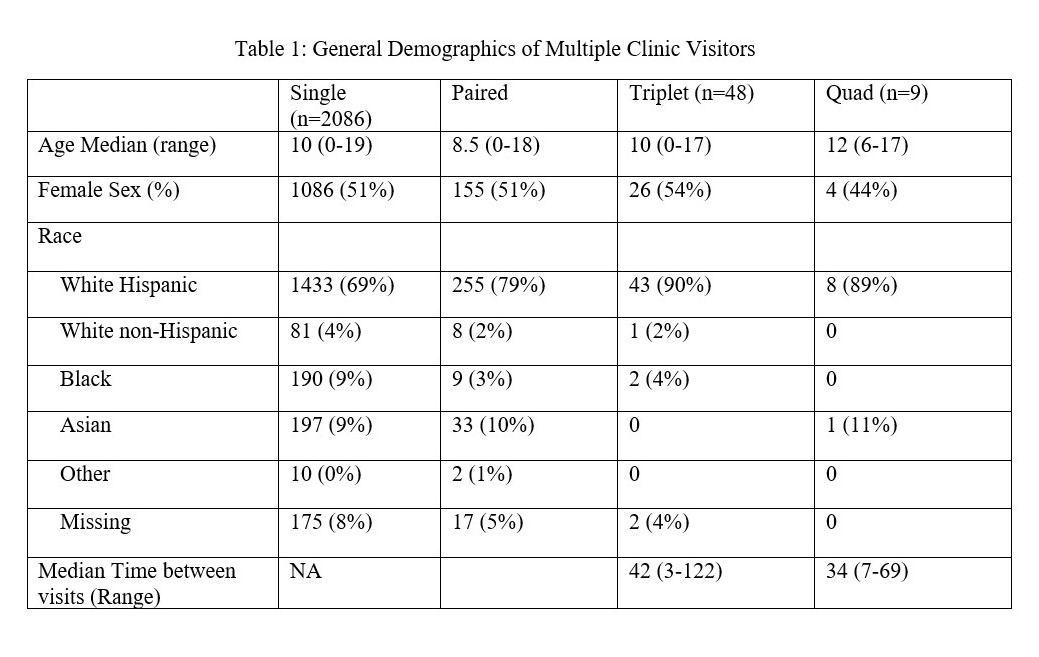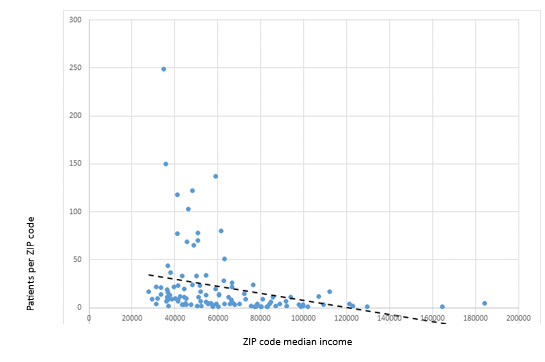Public Health & Prevention
Session: Public Health & Prevention 3
232 - Geographic Area Covered by a Pediatric Mobile Clinic Program: Distances Families Travel To Seek Care
Saturday, May 4, 2024
3:30 PM - 6:00 PM ET
Poster Number: 232
Publication Number: 232.1230
Publication Number: 232.1230

Sanghamitra Misra, MD, MEd (she/her/hers)
Professor
Baylor College of Medicine
Houston, Texas, United States
Presenting Author(s)
Background: The Texas Children’s Mobile Clinic Program (TC-MCP) delivers free healthcare to under-resourced children in the greater Houston area. The clinics travel to local schools, apartment complexes, and community centers where families bring their children to receive vaccines, well child care, and ill care. Clinic sites are in low-income areas, and immigrants and refugees from all over the world comprise 70-80% of patient population. The program serves as a very important safety net for families who have lost health insurance. The TC-MCP includes the Superkids Mobile Clinic (SKMC) and the Ronald McDonald Care Mobile (RMCM).
Objective: The purpose of this study was to determine the geographic locations from which patients come and to delineate the reach of the program.
Design/Methods: A retrospective chart review was conducted from Jan 1-June 30, 2022 of patients who visited SKMC and RMCM. Patient demographics were collected including age, race, ethnicity, gender, primary language spoken, vaccines received, home address, insurance status, and location of visit. Descriptive statistics (t-test for continuous data>30 samples, Kruskal Wallis for continuous data <=30 samples, Pearson χ-square testing for dichotomous data, and Fisher's exact testing for dichotomous data with < 5 observations/cell) were used to explore data. We used Stata IC 16.1 (College Station, Texas) for statistical analysis.
Results: Over the 6-month period, 2,467 children were seen and 10,271 vaccines were given. The majority (2086 (85%)) were seen once during the study time frame, 324 (13%) children were seen twice, 48 (2%) children were seen 3 times, and 9 children were seen 4 times. A generally increasing trend in the proportion of White-Hispanic patients was noticed among these groups, as 69% of those with a single visit were White-Hispanic while 90% of those with three or more visits were White-Hispanic (p < 0.01, OR=4.25, 95%CI1.55-16.3). Although patients originated from 141 zip codes, 40% of patients are from 5 zip codes. There was negative correlation between the proportion of children vaccinated and income in a ZIP code (p < 0.01). Two percent of all children living in the lowest income zip code in the Houston region were vaccinated by the TC-MCP, compared to 0.04% from a 50th percentile zip code.
Conclusion(s): Mobile clinic patients are primarily originating from the most economically disadvantaged regions of the city. The mobile clinics play a crucial role in advancing the public health of the most vulnerable populations in Houston.

.jpg)

